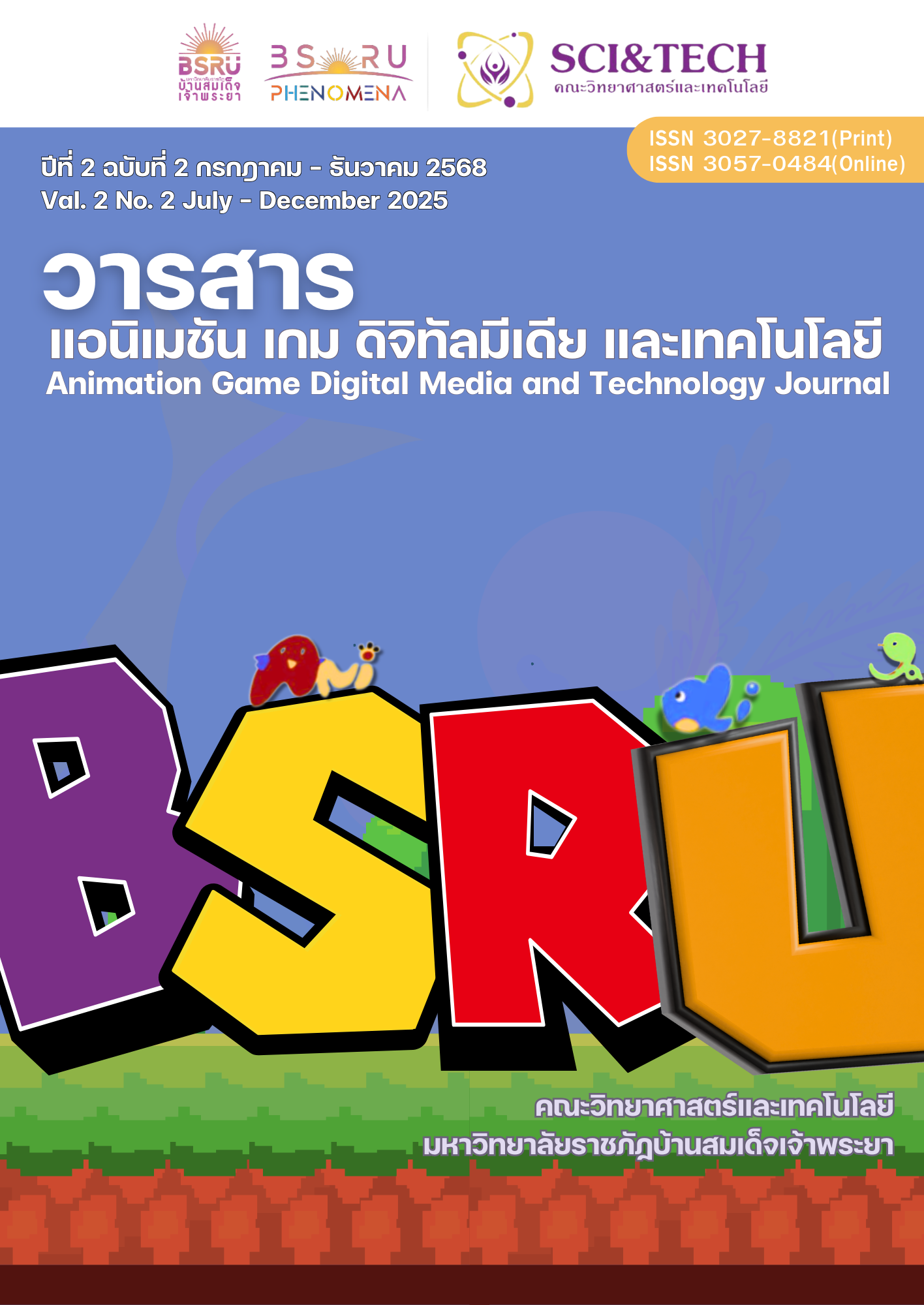Quality Assessment of 2D Digital Innovation Prototype for Enhancing Flipped Classroom Learning for Undergraduate Students
การประเมินคุณภาพและยอมรับต้นแบบนวัตกรรมดิจิทัล 2 มิติ ส่งเสริมการเรียนรู้สำหรับห้องเรียนกลับด้านของนักศึกษาระดับปริญญาตรี
Keywords:
2D Digital Innovation Prototype, Flipped Classroom Learning Enhancement, Digital Innovation Prototype Quality, Digital Innovation Prototype AcceptanceAbstract
The objectives of this research were to evaluate the quality and acceptance of a 2D digital innovation prototype for Enhancing flipped classroom learning for undergraduate students. The sample group consisted of 35 students majoring in Animation, Games, and Digital Media at Bansomdejchaopraya Rajabhat University who enrolled in Physical Science for Animation course in the second semester of academic year 2023. The research instruments included a 2D digital innovation prototype on Sound Waves, pre-test and post-test assessments, and a digital innovation acceptance evaluation form. The statistical analysis methods included mean, standard deviation, and t-test.
The research findings revealed that the quality assessment results comparing post-test scores were significantly higher than pre-test scores at the .05 level, with a learning development increase of 60.45%. The acceptance level of the 2D digital innovation prototype was high ( = 4.20, S.D. = 0.57). The results indicated that the developed digital innovation can be effectively used to promote flipped classroom learning.
References
Bransford JD, Brown AL, Cocking RR, editors. How people learn: Brain, mind, experience, and school. Washington, DC: National Academy Press; 2000.
Cornelius-White J. Learner-centered teacher-student relationships are effective: A meta-analysis. Rev Educ Res. 2007;77(1):113-43. doi:10.3102/ 003465430298563.
Hannafin MJ, Land SM. The foundations and assumptions of technology-enhanced student-centered learning environments. Instr Sci. 1997;25(3):167-202. doi:10.1023/A:1002997414652
Bergmann J, Sams A. Flip your classroom: Reach every student in every class every day. Eugene, OR: International Society for Technology in Education; 2012.
Kizilcec RF, Halawa S. Flipped classroom and the learning management system: Examining online learning behavior and performance across multiple courses. Comput Educ. 2021;160:104041.
Schneider M, Preckel F. Variables associated with achievement in higher education: A systematic review of meta-analyses. Psychol Bull. 2017;143(6): 565-600. doi:10.1037/bul0000098
Bishop JL, Verleger MA. The flipped classroom: A survey of the research. In: ASEE National Conference Proceedings [Internet]. 2013 Jun 23–26;Atlanta, GA, ASEEI; 2024 [cited 2025 Jun 8];30(9), p.1-18. Paper ID#6219. Available from: https://peer.asee.org/the-flipped-classroom-a-survey-of-the-research. doi:10.18260/1-2--22585
O'Flaherty J, Phillips C. The use of flipped classrooms in higher education: A scoping review. Internet High Educ. 2015;25:85-95. doi:10.1016/j.iheduc. 2015.02.002
Davis F. Perceived usefulness, perceived ease of use, and user acceptance of information technology. MIS Q. 1989;13(3):319-40. doi:10.2307/249008
Venkatesh V. Determinants of perceived ease of use: Integrating control, intrinsic motivation, and emotion into the technology acceptance model. Inf Syst Res. 2000;11(4):342-65. doi:10.1287/isre.11.4.342.11872
Scherer R, Siddiq F, Tondeur J. The technology acceptance model (TAM): A meta-analytic structural equation modeling approach to explaining teacher's adoption of digital technology in education. Comput Educ. 2019;128:13-35. doi:10.1016/j.compedu.2018.09.009
Downloads
Published
How to Cite
Issue
Section
License
Copyright (c) 2025 Animation Game Digital Media and Technology Journal

This work is licensed under a Creative Commons Attribution-NonCommercial-NoDerivatives 4.0 International License.






